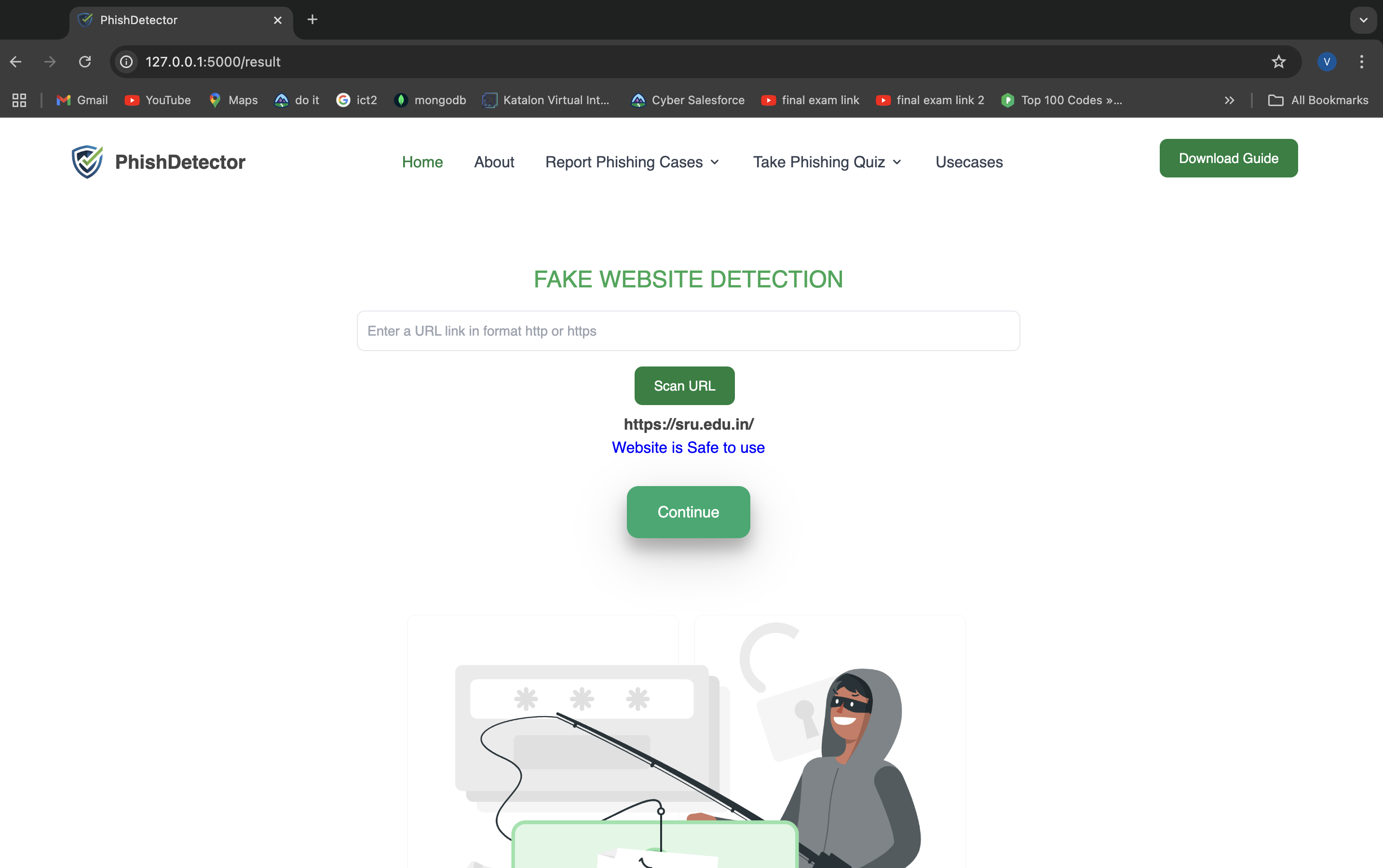Phishing link and URL Checker using Machine Learning
 Bindhu Gandra
Bindhu Gandra
Introduction
In today’s digital world, phishing has become one of the most frequent and serious types of cybercrime. These scams trick people into sharing personal information by pretending to be trustworthy websites or emails. With the rise in online transactions, the risk of falling for phishing schemes is also growing. Our project, "Phishing Link and URL Checker Using Machine Learning," is designed to tackle this issue with a smart solution that identifies potentially dangerous links by examining domain names. By using machine learning, our system boosts the speed and accuracy of phishing detection, helping to make online experiences safer for everyone.
Project Overview
The main aim of our project is to develop a machine learning model that can spot phishing attempts by examining URLs. Unlike traditional methods that depend on blacklists or fixed rules, which can overlook new phishing techniques. Our model looks for patterns based on actual phishing and safe URLs. This approach helps detect suspicious URLs, even if they haven’t been flagged before. Our goal is to make phishing detection quicker and more flexible, contributing to a safer online environment for users.
Key Features
Key Features Our phishing detection model stands out with several unique features that improve its performance:
Domain Analysis: Instead of analyzing the full URL, the model focuses on domain-specific features, which makes it more efficient and effective without being too heavy on resources.
User-Friendly Interface: We’ve built an easy-to-use interface where users can quickly enter URLs and instantly get feedback on whether the link is safe or potentially harmful.
Technologies Used
For the development of this project, we used a combination of powerful technologies and tools:
Python: The main language used to develop the model and handle the backend processes. Flask: A web framework that helped us build the web interface. Scikit-Learn: Used to implement the machine learning algorithms and handle data preprocessing. Pandas & NumPy: Essential for efficient data manipulation and feature engineering. HTML/CSS: Used to design and style the user interface, ensuring a smooth and user-friendly experience.
Machine Learning Approach
Our model utilizes the Gradient Boosting Classifier, a robust ensemble algorithm that combines several "weak learners" to boost predictive accuracy. Gradient Boosting is particularly useful for classification tasks, as it excels at detecting subtle differences between phishing and legitimate URLs. After training the model on a labeled dataset of URLs, we fine-tuned it by adjusting key hyperparameters like the learning rate and the number of estimators to optimize its performance. The result is a highly accurate model capable of reliably detecting phishing URLs, making it well-suited for real-world use.
Code Structure
Our project is organized into several modules to ensure clarity and ease of use:
app.py: This file contains the core application logic, handling routing and user interface functions.
feature.py: Defines functions that extract domain-based features from URLs to aid in phishing detection.
convert.py: A helper file responsible for converting the model’s output into user-friendly, readable results.
model.pkl: A serialized file containing the trained machine learning model, used for making predictions. templates/: This folder holds HTML files, including index.html, which defines the front-end structure of the application.
How It Works
User Input: The user enters a URL they want to check. Feature Extraction: The system processes the URL to extract important features, like the length, number of subdomains, and the presence of suspicious keywords. Prediction: These extracted features are then passed to the machine learning model, which predicts whether the URL is phishing or legitimate. Result Display: The prediction result, along with a confidence score, is shown to the user, giving them an insight into the likelihood of the URL being a phishing attempt.
Future Improvements
Blockchain Technology: The use of blockchain technology can provide secure and tamper-proof data storage for phishing detection systems, improving their reliability and trustworthiness.
Mobile Device Protection: As more users access online services through mobile devices, implementing mobile device protection measures can help prevent phishing attacks targeting mobile users.
Conclusion
Our Phishing Link and URL Checker using Machine Learning offers a practical solution to the growing threat of phishing attacks. By focusing on domain-based analysis, our model provides a quick and efficient way to identify malicious URLs, offering users both detection results and confidence scores. While the current focus is on domain names, the project showcases how machine learning can create adaptable, effective defenses against cyber threats. Looking ahead, features like IP detection and real-time URL tracking could further enhance the tool, making it an even stronger security resource. With projects like this, our goal is to make the internet safer for everyone.
Team :
P . Viswa Sri - 2103A51181
B . Pragnya - 2103A51083
G . Bindhu Sri - 2103A51316
K . Prem Chander - 2103A51228
G . Saiteja - 2103A51404
Subscribe to my newsletter
Read articles from Bindhu Gandra directly inside your inbox. Subscribe to the newsletter, and don't miss out.
Written by
